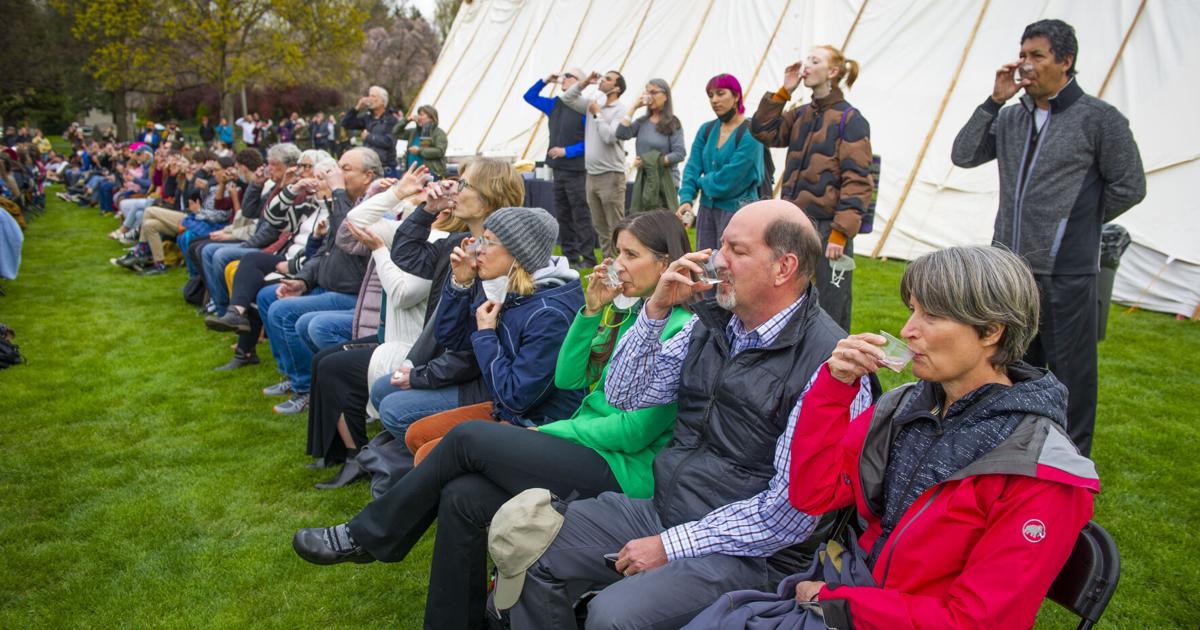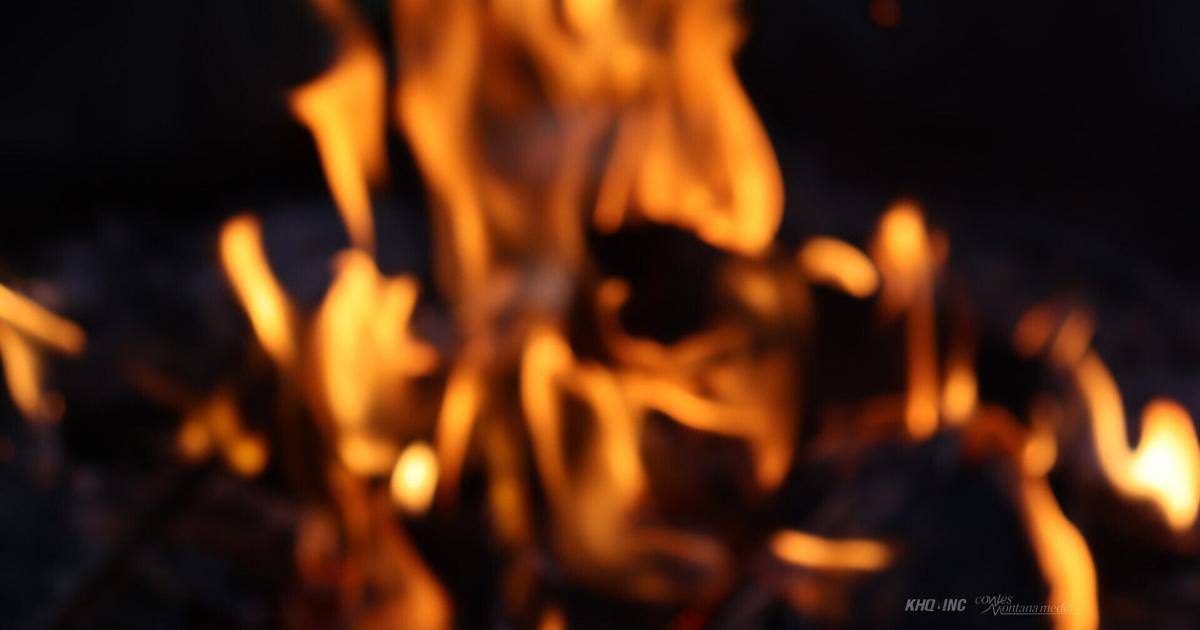Kwalk ineet, or “long tent” in English, is a traditional structure used by people in this area for thousands of years, said Walúulapam chief Don Sampson. But this week, Whitman College students and members of the public can get a closer look at one.
An ineet kwalk has been built at Ankeny Field on the Whitman campus and will remain there for the rest of the week. The exhibit is the result of a partnership between the college and the Confederate Tribes of the Umatilla Indian Reservation.
Whitman elder Roger Amerman, who is also a member of the Choctaw Nation, helped bring the tribes and the college together.
A kwalk ineet is not seen very often off a reservation, let alone on a college campus. In fact, organizers say this is the first time such a structure has been built at a college or university.
Executive Director of the Confederate Tribes of the Umatilla Indian Reservation, Don Sampson, addresses the gathering during the opening ceremony of…
Sampson said he hopes the experience will be educational and help Whitman students learn more about the terrain they attend school on.
History of kwalk inet
The long tent is a structure used by the Native American tribes of the Plateau. While they are made from canvas today, they were historically made from tule or bullrush mats.
Sampson said the kwalk ineet is a very important part of the history of the indigenous peoples of this region.
“This is the lodge where families met and lived for many years,” he said.
A large crowd turns up for the opening ceremony of a week-long event in the long plateau tent on the Ankeny grounds of Whitman College, Monday, April 18, 2022.
Such structures have had many uses throughout history. Larger tents, such as Whitman’s, provided a gathering place.
“It’s a place where families live, where teachings are given, where people’s way of life happened,” he said. “These larger ones were also used for ceremonial gatherings. When there were feasts, when there were baptisms, when there were memorial services or funerals. These were all conducted within them.
Long tents were of great importance when collecting food, Sampson said.
“As people traveled on horseback or on foot, they came to places where they had camped many times before. They would build a frame out of teepee poles and cover it with tulle mats,” he said. “These were temporary structures that were used for the season around a food to be picked.”

Students, faculty and community members savor a varied buffet during the opening ceremony of a week-long event under the long plateau tent on Whitman College’s Ankeny grounds on Monday, April 18 2022.
Although they are not often used for permanent dwelling structures today, Sampson said, their use for ceremonial gatherings remains.
They also have an educational use, showing what life was like for people here several generations ago.
Whitman’s Long Tent Project
The project at Whitman College began on Monday April 18 with an opening ceremony.
Sampson, Amerman and the chiefs of neighboring tribes participated.
Several hundred people – mostly students, but also members of the community – were present to consult the kwalk ineet and listen to the speeches.

People visit the photography exhibit inside the tent during the opening ceremony of a week-long event on the long plateau tent on the Ankeny grounds of Whitman College, Monday, April 18, 2022 .
Sampson told UB ahead of the event that he hoped attendees would get a better sense of the history of the Walúulapam land and people, which largely predates American history in the region.
“The Walla Walla Valley was our home long before non-natives came here,” Sampson said. “It was our homeland, and it still is today…I always hear people say, ‘Oh, I’m a fifth generation farmer.’ I say, ‘Well, you know, I’ve been here for about 10,000 generations. So where you live is where my home is.
Still, he said Monday’s ceremony would not be about berating people but rather about reconciliation and unity.
It turned out to be true.
“I think it’s important to recognize our people who have come from this land here for thousands and thousands of generations,” he told the crowd at the ceremony. “But today we share this land with each one of you…Today we can rejoice as one people. We are all one family, together. It doesn’t matter what color your skin is.
That’s not to say he ignored the negative aspects of the story. In fact, he connected it to the news.
“I was watching people in Ukraine being invaded on TV,” he said. “And I got to thinking, ‘You know, not too long ago our people saw the same thing happen to them. It was a tough time for us, but we’re still here today. You can see us.

Fred Hill, center, leads a musical blessing sung by various local tribal members to kick off the opening ceremony of a week-long event at the Plateau Long Tent on Whitman College’s Ankeny grounds on Monday, 18 April 2022.
Other speakers at the opening ceremony included Amerman, other Indigenous leaders and representatives from Whitman College.
“As I stand in front of the long tent today, I am filled with a sense of wonder and gratitude,” said outgoing Whitman President Kathy Murray. “Increasing our campus’ connection to the past, present and future of the Walla Walla Valley has been a real priority for me.”
Sampson told UB he thinks an ongoing relationship between the Confederated Tribes of the Umatilla Indian Reservation and the college can be good for both the college and the tribes.
“None of our children can afford to go to school there, and now they can provide scholarships,” Sampson said. “It’s a gesture of reconciliation, and we’re grateful for that.”
Whitman’s spokeswoman, Gillian Frew, confirmed to UB that the college was working with CTUIR on scholarships for students from local tribes.



